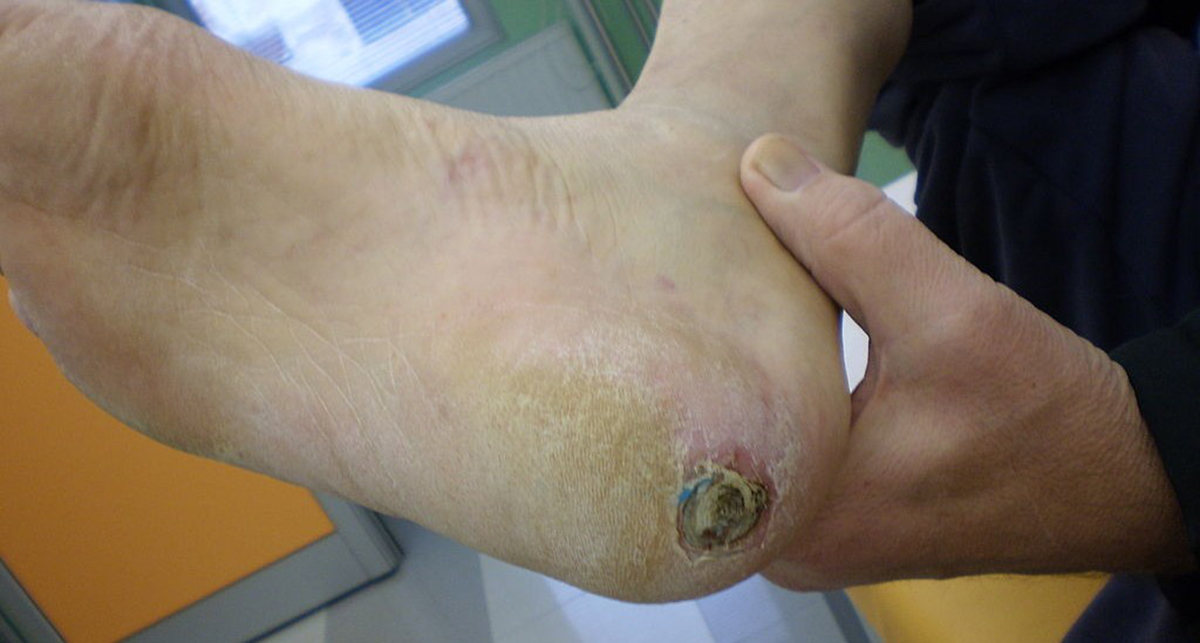Table of Contents
Diabetics who have had the disease 15 years, 20 years, or more, often start developing wounds in the skin, especially on their feet and shins. Diabetic skin wounds may never break the skin and never bleed. Sometimes there is just a hole underneath the skin with the top layer of skin intact.

Sometimes diabetic skin wounds result in the skin turning black or blue, or crusting over with substance that looks like mucus. Diabetes may cause the formation of calluses that are so thick that they cause the skin to blister around them, and it can also cause open wounds that are easily infected, providing a freeway for infection to enter the muscles and bones of the feet and legs.
On lifetime basis, about 20% of all diabetics develop diabetic skin wounds, and about 5% have amputations.
What Goes Wrong in a Diabetic Skin Ulcer?
The underlying problem that causes diabetic skin ulcers is a loss of circulation in the foot. Many diabetics develop some degree of atherosclerosis in arteries all over their bodies. In some parts of the body, the circulatory can "re-route" blood flow around stretches of arteries that are blocked by calcified cholesterol plaques. Blood continues to flow where it is needed through collateral arteries. In the foot, however, there is relatively little room between the arteries and their collaterals. If an artery in the foot becomes clogged by atherosclerosis, less blood can flow through the collateral arteries, and any injury to the tissues around the artery reduces the flow of blood even more. So little blood flows to the skin at some locations that they atrophy.
Diabetic Neuropathy Complicates the Problems Caused by Poor Circulation
Making the situation worse is the reality that most long-term diabetics develop some degree of diabetic neuropathy. This is a condition of degeneration in the nerves that serve the foot. The sural and tibial nerves in the feet originate above the knees. They have to send nutrients from top to bottom along the nerve when there is less arterial flow in the feet. In diabetic neuropathy, these nerves become less and less functional the lower they go, so that there is less and less feeling in the feet.
See Also: Maggots Help Heal Diabetic Wounds
An example of just how profound sensory loss in the feet becomes is the fact that most surgery on the feet is performed without anesthetic--diabetics don't even feel it. Diabetics also may not experience pain when they step on a tack or a nail, or they break a bone, or they cut the cuticle of a toenail. If they do not inspect their feet on a daily basis, infections can set in quickly. It's not unusual for the reason a diabetic finally goes to the podiatrist is that the infection smells so bad they have to throw out their socks or even their shoes.
- Koob TJ, Lim JJ, Massee M, Zabek N, Rennert R, Gurtner G, Li WW. Angiogenic properties of dehydrated human amnion/chorion allografts: therapeutic potential for soft tissue repair and regeneration. Vasc Cell. 2014 May 1. 6:10. doi: 10.1186/2045-824X-6-10. eCollection 2014. PMID: 24817999.
- Photo courtesy of Intermedichbo by Wikimedia Commons : sr.wikipedia.org/wiki/%D0%94%D0%B0%D1%82%D0%BE%D1%82%D0%B5%D0%BA%D0%B0:Dijabetesno_stopalo_2011_1.jpg
- Photo courtesy of Raúl Santos de la Cámara by Flickr : www.flickr.com/photos/zero0112/3653139131


Your thoughts on this